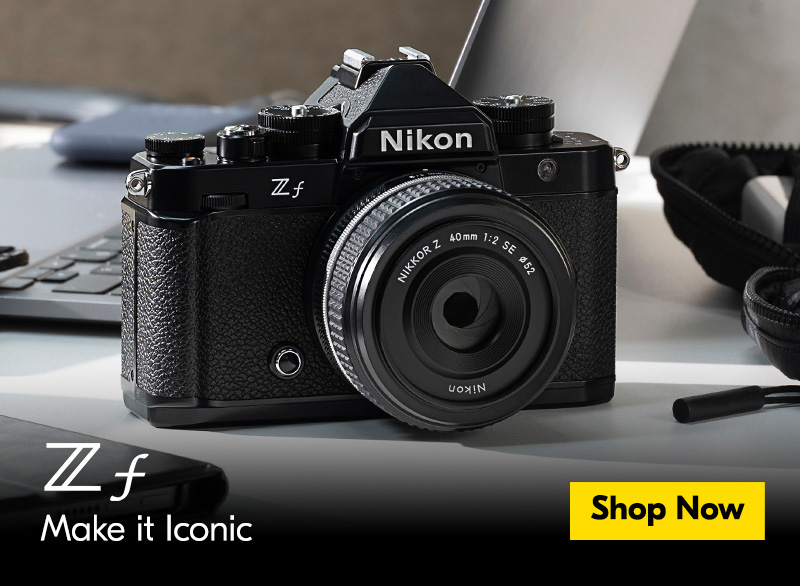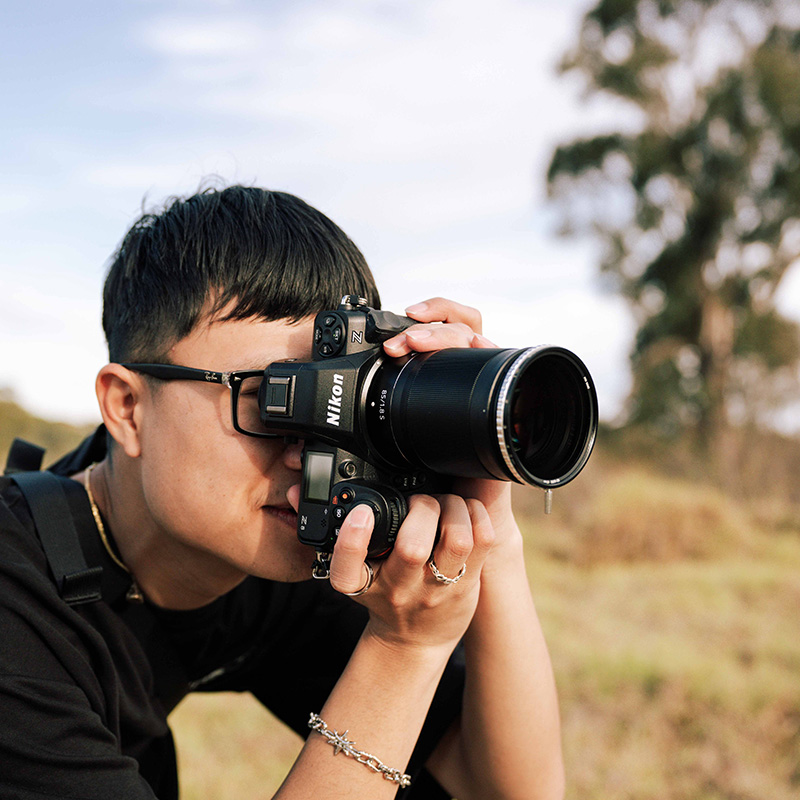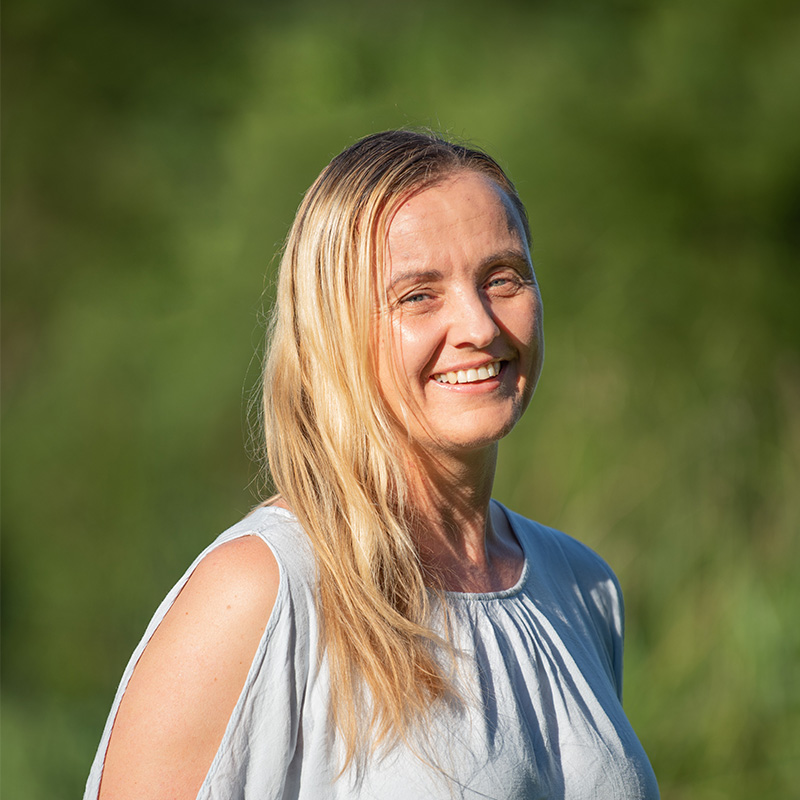Portrait Photography: A Quickstart Guide for World Photography Day
How do you tell a story and evoke emotion in a still image? Anton Kollo has the answer.


Endeavouring into the world of photography, whether as a hobby or a profession, is one thing. Finding your authentic place within it is another. Sure, many end up Jacks and Jills of all disciplines, but in most cases a photographer will experiment in lieu of developing a passion for one in particular.
With that delicate dance in mind, we’re celebrating World Photography Day with a trio of discipline-specific deep dives with as many masters of their craft.
Canberra-based photographer Anton Kollo wears a number of hats, including filmmaker, content creator and event photographer. Commercially, Anton has worked on many projects including the Nikon Asia Z fc campaign, Makeshift café, and Transport Heritage Australia. As a filmmaker, he has created for Eat Speak Learn Speech Pathology and A Gender Agenda.
But if there’s any concern that governs his creative output, it’s people and their surroundings. His relaxed and amiable personality is perfectly suited to portrait photography, as it allows his subjects the freedom to shine. He combines a keen sensitivity for authentic emotion with a uniquely serene visual sensibility. Here, he reveals what it takes to capture that perfect portrait.


What is portrait photography?
It’s safe to say that portraiture is one of the most popular forms of photography. Ever since the medium was invented, humans have sought to reflect, explore and immortalise each other through the still image. Personally, portrait photography is all about capturing the emotions and essence of the individual. It goes beyond framing the face or the eyes of a person, it’s about capturing a character, a personality, a mood.
How did you get started in portrait photography?
I began really committing to portraiture about two years ago. It all started thanks to a happy accident, actually. At the time, a good friend of mine asked if I would photograph them, and I agreed but really didn’t think much of it. During and after the shoot, I ended up really enjoying the process and liking the photos. From then, I was all in. It just shows that you should remain open to all creative opportunities as you never know when inspiration will come.
How do you get in the creative zone?
Before any sort of creative endeavour, the first thing I usually do is turn off my phone. That simple act eliminates a lot of distraction immediately. Then, the first 10 minutes of my process is a warm-up phase, where I ground myself, walk around the subject, and get a feel for what I’m really looking at. I take photos from different angles, experiment with different perspectives. The warm-up phase is very important, as it’s non-judgemental and allows me to get as comfortable as possible.
The more comfortable I am, the better. I have found that my best portraits were taken when I am the most relaxed. Yes, it’s vital that the subject is relaxed and free enough to give themselves up to the camera, but it’s just as vital that I am in a similar state of being.
What gear do you use to capture portraits?
At the moment, I use a mirrorless body - the Nikon Z fc, with a NIKKOR Z 50mm f/1.8 S lens. Don’t get me wrong, I encourage anyone who wants to explore portrait photography to get out there with any camera and experiment. But if you are serious about portraits, I recommend you get yourself a good 50mm lens. As soon as you shoot your first shots with this kind of gear, you will see the difference immediately, and it’s the kind of difference that not only opens up a world of possibility, but inspires you creatively. If you need further convincing, search online for portraits taken with different lenses, and see just how much more beautiful the ones are that were taken with a 50mm!




What settings do you use?
I always shoot in manual mode and if you want to capture something that is truly you, I say do the same. Manual mode gives you the ultimate control over your camera settings, which means you can select the shutter speed, aperture and ISO that will best serve your image.
Generally, I find the best shutter speed for portrait photography is between 1/160s and 1/200s. This isn’t set in stone, though, as if your subject is moving quickly, then you need to increase your shutter speed accordingly. My typical setting for aperture is between f/2.8 and f/6, but again, this is determined by what you’re capturing and your overall concept and idea. Some shots call for (and some photographers really love) a very blurry background, and at other times, less blur is better suited or preferred. Lastly, the usual ISO range for portraiture is between 100 to 400.
These figures are only a guide, and it’s important for you to experiment with these settings as much as possible until you gain a thorough feel for and understanding of them. Once you do, you’ll find your sweet spots in no time.




Portrait photography in 8 tips
Conceptualise
While there’s something to be said for going in blind and seeing what comes out, it’s not something I’d recommend very often. The best shoots are those where you have a concept or idea in your head before you go out and shoot – and that can be in terms of mood, tone, aesthetic, line, shape, colour, dress, and a number of other things. Of course, you always need to leave some room for experimentation and opportunity, as some of the most memorable images come from surprise… but in order to properly experiment and notice opportunities, it’s best to be working from a solid foundation you’ve already laid out.
Personally, I find that mood boards always help, as they get you out of your head and allow you to visualise and communicate what you want, not only to yourself but to others too.


Location is key
While people are the primary focus of portraiture, where you choose to situate them can make or break an image. Depending on your concept, the background and/or surrounds can alter the look and meaning of the shot. Portraiture in a studio with lighting is radically different to on-location with natural light. A portrait in someone’s home is radically different to one taken in nature. Featuring the surroundings is different to shooting someone against a distant background. It’s vital that you consider whether your chosen location communicates your desired concept to the audience.
Choosing a location is an art in itself, as is deciding how you’ll shoot your subject within the physical and technical constraints of that location.


Focus on emotions
We all want our portrait photographs to look great, that’s a given. But a great photo goes beyond how great someone looks in a certain location or light. This is where the emotion of your subject becomes important, as it can greatly affect the resulting image. Again, it’s important to go back to your initial idea or concept, as that will help you figure out what emotion you are attempting to capture.
Whatever the emotion may be, it cannot be captured without a connection between you and the subject. In order to feel free to direct whoever appears in your image, or ask them to reveal themselves in various ways, you need to establish a relationship with them. This isn’t always easy, especially if you don’t have much (or any!) time to get to know them before the shoot, but as long as you remain open and present, you can make the subject feel relaxed and as if they are in good hands.


Try props!
If you are ever feeling as if you need to give your images some life, whether in the conceptualising phase or during the actual shoot, props can be a great way to do so. Of course, grabbing the nearest object and hoping for the best will rarely work, so it’s important to put a bit of thought into the kinds of props you might use. For instance, if you’re photographing someone with a particular profession, skill or interest, you could pick a prop from their world. You could come at it from another angle and think about the mood that you’re trying to conjure, and select an object that evokes it. The possibilities are endless.
But remember, just as you shouldn’t be afraid to experiment with props, you shouldn’t be afraid to take them away if they don’t end up working out the way that you want.


Alter your perspective
No matter how much you think you know what your image will look like, there’s always room to play. Experimenting with different angles and perspectives can be a great way to get inspired and discover the unexpected. This is a particularly useful practice if you come into a shoot and find that things aren’t quite working the way you want. In those moments, break free from what’s limiting you and explore your subject from a different perspective. You might be surprised what comes to light.


Follow composition rules and break them too
Every photographer should know the rules of composition (for example, the rule of thirds). These rules exist for a reason, as they can help transform a poor image into a great one. No matter how advanced you are, you will at least some of the time utilise these time-honoured traditions. However, just as I noted with perspective, it is often when you step outside the rules that magic is made. It could be as simple as framing a composition according to the rule of thirds, then shifting the camera ever so slightly to play with the image’s balance.
While breaking the rules of composition can work wonders, it only works if you know the rules to begin with. So, learn those rules until they become second nature, and then you can colour outside the lines all you like!


Experiment with lighting
Whether using natural or artificial light, playing with the interaction between your subject and the lighting is also a great way to get inspired. Of course, natural light often requires that you and your subject move around, but with artificial lights you can achieve a range of unique looks and atmospheres by moving them around, or changing their intensities, or using coloured overlays. Again, it’s important to learn the rules of light, but don’t be afraid to break them and go with what your eye tells you.


Relax and have fun!
There’s no point pursuing photography if you don’t enjoy it. And if you do, then make sure you remember that fact even on high-pressure shoots. As I said before, the best photos often come when you are most relaxed and in a state of enjoyment.
What makes a great portrait?
Firstly, a great portrait is one that makes me feel. What does that mean? It means that when I look at the image, I can feel the emotion coming through it. This could be due to the subject’s expression, or the overall atmosphere, or a combination of the two.
Secondly, a great portrait also often tells a story. Being able to communicate a story over a series of images or moving images is one thing, but doing so with a single image is much harder to achieve.
I strive to create portraits that make people feel, yet also communicate a story. That’s a winning combination if there ever was one.







